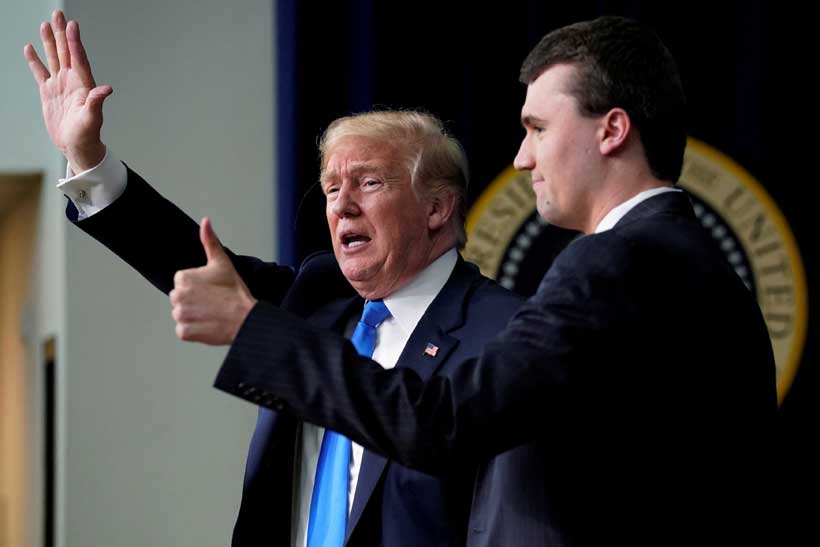The shooting of Charlie Kirk, a right-wing activist and founder of Turning Point USA, has attracted global attention. It didn’t take long for the media to rush to write narratives related to the shooting of Charlie Kirk. This tragedy is not only a sad news, it has transformed into a political stage that reveals the reality of how the world of news works. This, of course, raises a big question: how can a violent tragedy turn into a political conversation?
The Political Dimension of the Charlie Kirk Shooting
In a society often polarized by politics, an event is often responded to not by its substance but by who was involved in it. In this tragedy, the most widely reported information was related to Charlie Kirk’s political identity, his affiliation with Donald Trump and his close ties to conservative groups.
Violence against political figures in the United States is nothing new. However, Kirk’s case has become a turning point, demonstrating how vulnerable the public can be when political identities take precedence over human values. In its official statement on S. Res. 391, Congress honored Kirk’s commitment to the constitutional principles of civil discussion and debate among all Americans, regardless of political affiliation.
Facts about the Charlie Kirk shooting tragedy
On September 10, 2025, Charlie Kirk was shot and killed on the campus of Utah Valley University. At the time of the incident, Kirk was answering questions about transgender shooters and mass shooters at a public debate themed “Prove Me Wrong” and hosted by Turning Point USA. Panic ensued, and security officers immediately carried him out on a stretcher, but unfortunately, Kirk’s life could not be saved because the bullet hit his neck.
The FBI and Utah State Police are working together to gather evidence, release video of the alleged shooter, and even offer a $100,000 reward for information leading to the identity of the Kirk shooter. Campus CCTV footage shows a man jumping from the Losee Center building. Prior to the arrest of Tyler Robinson (the shooter), two other men were detained on the day of the shooting, but were soon released after their innocence was proven.
An affidavit of probable cause from the Utah prosecutor’s office outlines the charges and elements of the charges, one of which is the enhancement of victim-targeting related to the victim’s political views. Tyler Robinson was charged with Aggravated Murder under Section 76-5-202 (F1 Felony), Felony Discharge of Firearms under Section 76-11-210(2)(3C) and Obstruction of Justice-Capital/First Degree Felony Conduct under Section 76-8-306(2)+(3A).
The Shift from Tragedy to Narrative in Public Space
The threat of domestic violence and terrorism in the United States is driven by social, political, and global factors. A divided political environment and the proliferation of digital disinformation have fueled the radicalization of individuals, often targeting political activists, government officials, and ethnic and religious minorities.
In this context, Kirk’s shooting demonstrates how a real tragedy has become a platform for shaping public opinion. Framing Kirk’s position and the perpetrator’s position creates a polarization, with conservatives viewing the shooting as a form of silencing of the values of free speech in the United States. While others view this event as a form of ideological hostility that has led to political violence, they believe it reflects extreme rhetoric. What ultimately creates two conflicting versions of the truth, so that society no longer sympathizes with the event but shifts to its ideological position.
Public Polarization and the Construction of Global Media Reality
Several media narratives also highlighted the affiliation of Tyler Robinson, a 22-year-old college student who was confirmed by the FBI as the perpetrator of Kirk’s shooting. However, public attention was no longer focused on the perpetrator’s motives, but rather on his ideological positions, social background, and political views. This further widened the gap in public polarization. Recurring narratives in the media reinforced certain images, one of which placed Tyler as affiliated with a political party. Most media outlets did not write narratives that showed the motives of the crime and the human aspects that could build public empathy. As a result, many people speculated that this was a political incident, not an ordinary shooting tragedy.
In an increasingly connected world, the line between local events and global issues is becoming increasingly blurred. The news of the Charlie Kirk tragedy has crossed borders and shaped broader debates about freedom of speech and democracy in the United States. This event has then become no longer seen as a domestic US issue but has evolved into a global reflection of narratives that are more often traded than conveying reality.
Kirk’s death should elicit empathy regardless of political affiliation or ideological views. Politics has taken over the media’s sense of humanity. Media plays a crucial role in distributing information, so it should be free from political elements that shape public opinion. When differing views are used as a source of conflict, the public sphere loses its function as a forum for discussion. Ultimately, the public can only be urged to think critically so that a tragedy is no longer used as a political commodity.
